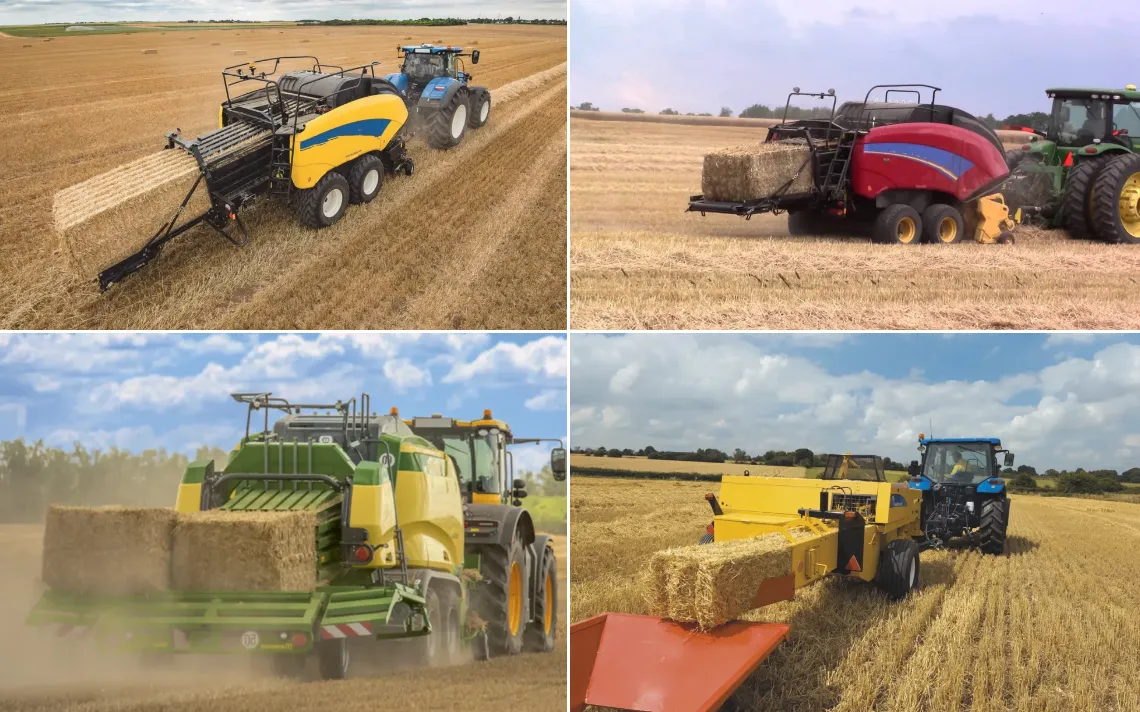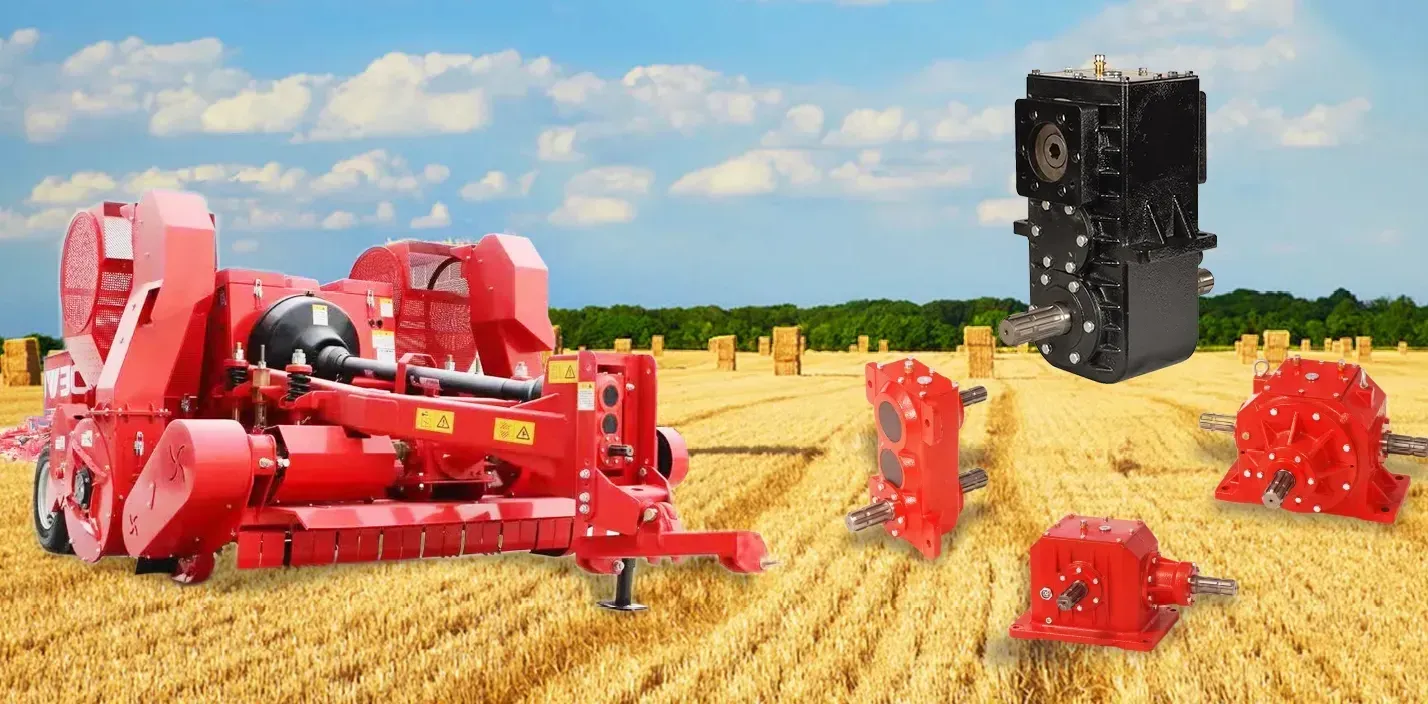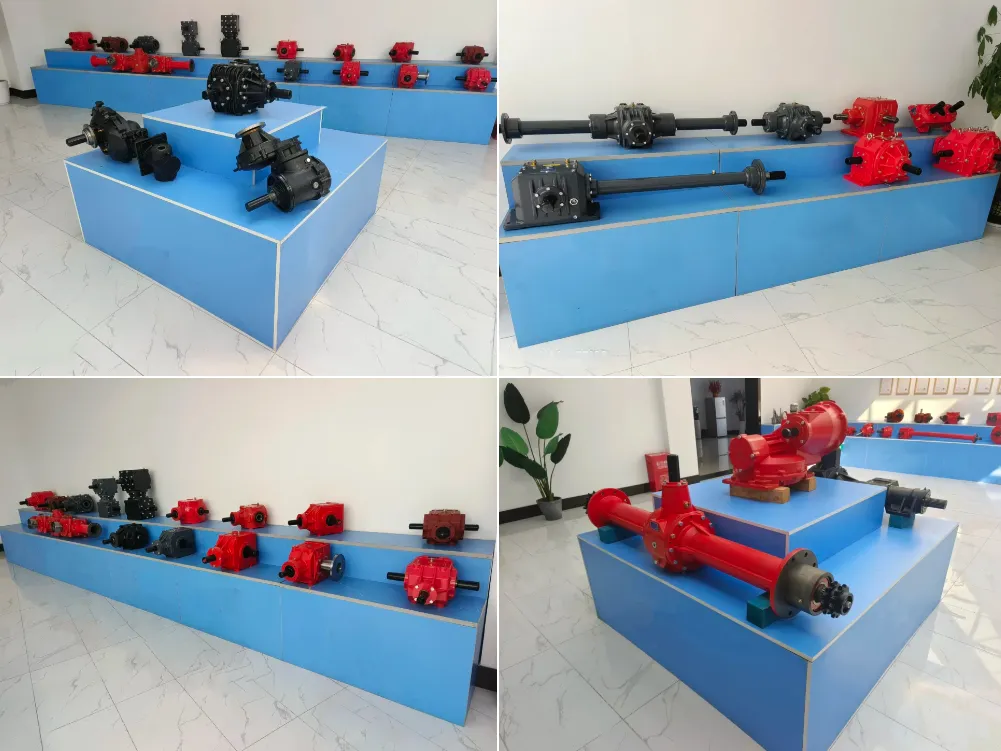What is the Best Gearbox for Square Baler in Agriculture?
A gearbox for a square baler in agriculture is a vital mechanical component that plays a role in the operation of the baler machine. This device connects to the power take-off (PTO) shaft of a tractor and drives the various components of the baler to produce square bales of hay or straw. It is designed to withstand the rigors of agricultural tasks, ensuring that the baler operates efficiently and effectively.
Advantages of the Best Gearbox for Square Baler in Agriculture
The best gearbox for a square baler in agriculture offers several advantages:
- Efficient power transmission: It efficiently transfers power from the tractor's PTO shaft to the baler's internal mechanisms.
- Durability: It is built to last, with high-quality materials that withstand the harsh conditions of agricultural environments.

- Enhanced productivity: It helps improve the productivity of farming operations by enabling the baler to operate effectively.
- Easy installation: It can be easily installed and replaced, making it a perfect replacement for damaged parts on agricultural machinery.
- Customizable: At XinLan, we can produce this product tailored to your specific needs, ensuring it fits perfectly with your agricultural machinery.
Applications of the Best Gearbox for Square Baler in Agriculture
The best gearbox for a square baler in agriculture finds application in:
- Hay baling: It enables the baler to compact and bind hay into dense, square bales.
- Straw baling: It also aids in the baling of straw, making it easier to handle, transport, and store.
- Crop residue management: It can be used in the baling of crop residues, promoting sustainable farming practices.
- Animal feed preparation: The baled hay or straw can be used as animal feed in livestock farming.
- Commercial farming operations: It is suitable for use in large-scale farming operations, helping to enhance productivity and efficiency.

How Does the Square Baler Gearbox Work?
A square baler gearbox is a mechanical device that connects to a tractor's PTO shaft and drives the baler's various components to produce square bales of hay or straw. The working principle of a square baler gearbox involves the transmission of rotational power from the tractor's PTO shaft to the baler's internal mechanisms. Here's a step-by-step explanation of how it typically works:
- Power Take-Off (PTO) Shaft: The tractor's PTO shaft is a rotating shaft connected to the tractor's engine. When the tractor's engine is running, it transmits power through the PTO shaft.
- Input Connection: The square baler gearbox has an input connection designed to fit and engage with the tractor's PTO shaft. This connection allows the rotational power from the PTO shaft to be transferred to the gearbox.
- Input Shaft: The input connection on the gearbox is connected to an input shaft inside the gearbox. As the PTO shaft rotates, it drives the input shaft, transmitting power into the gearbox.
- Gear Train: Inside the gearbox, there is a system of gears arranged in a gear train. The gear train consists of different-sized gears that mesh with each other. The specific arrangement of gears determines the speed and torque conversion within the gearbox.
- Clutching Mechanism: The gearbox also includes a clutching mechanism that allows the operator to engage or disengage the gearbox from the tractor's PTO shaft. This mechanism is typically controlled by a lever or a clutch pedal.
- Output Shaft: The gear train within the gearbox ultimately drives an output shaft. The output shaft is connected to the baler's various components, such as the plunger, the knotters, and the bale chamber.
- Baler Operation: When the gearbox is engaged and the tractor's PTO shaft is turning, the rotational power is transmitted from the input shaft through the gear train to the output shaft. This, in turn, drives the baler's components, enabling them to perform their specific functions.

Install the Tractor PTO Square Baler Gearbox to the Baler
Installing a tractor PTO square baler gearbox to a square baler involves several steps to ensure a correct and safe setup. This process allows the baler to utilize power from the tractor's engine to operate the baling mechanisms. Here's a general guide on how to install the gearbox:
- Position the Baler: Park the square baler on a flat, level surface and engage the parking brake to secure it in place. Identify the mounting points on the square baler where the gearbox will be attached. These mounting points are typically located on the side or rear of the baler and may include brackets or holes specifically designed for gearbox installation.
- Align the Gearbox: Position the gearbox in front of the mounting points, ensuring that the input connection aligns with the tractor's PTO shaft. The gearbox should be oriented in a way that allows for smooth power transmission from the tractor to the baler.
- Attach Mounting Brackets: If your baler requires the use of mounting brackets, attach them to the designated mounting points using the appropriate bolts, nuts, or pins. Ensure that the brackets are securely fastened to the baler.
- Connect the PTO Shaft: Slide the input connection of the gearbox onto the tractor's PTO shaft. Make sure it fits snugly and engages fully with the PTO shaft. Some gearboxes may have a locking mechanism or a retaining pin to secure the connection.
- Secure the Gearbox: Once the gearbox is properly aligned and connected, secure it to the mounting brackets or holes on the baler. Again, use the appropriate bolts, nuts, or pins and tighten them securely. Ensure that the gearbox is firmly attached to the baler and does not have excessive play or movement.
- Check Clearance and Alignment: Before operating the baler, double-check the clearance and alignment of the gearbox. Ensure that there is no interference with other components of the baler and that the gearbox is aligned properly with the PTO shaft and the baler's internal mechanisms.
- Test Operation: Start the tractor's engine and engage the PTO. Observe the gearbox and the baler's components to ensure that they are functioning correctly. Listen for any unusual noises or vibrations, which may indicate misalignment or other issues.

Proper Maintenance of Square Baler Gearbox
Proper maintenance of the square baler gearbox is essential to ensure its longevity and reliable performance. Here are some tips to help you maintain the gearbox effectively:
- Regular inspections: Perform visual inspections of the gearbox to check for any signs of leaks, damage, or wear. Look for oil stains around seals, cracks in the housing, loose bolts, or any abnormal noise during operation. Address any issues promptly.
- Lubrication: Follow the manufacturer's recommendations for lubrication intervals and use the appropriate lubricant. Apply lubricant to the specified points, such as bearings, gears, and shafts, as indicated in the baler's manual. Regular lubrication helps reduce friction, heat, and wear in the gearbox.
- Gearbox oil change: Change the gearbox oil at the recommended intervals or as specified by the manufacturer. Regular oil changes help remove contaminants and ensure proper lubrication. Refer to the earlier instructions provided for the oil change process.
- Cleanliness: Keep the gearbox area clean and free of debris, dust, and crop residue. Use compressed air or a soft brush to remove dirt and debris that may accumulate on the gearbox housing. This helps prevent contamination of the internal components and promotes efficient heat dissipation.
- Proper use: Operate the baler within its recommended capacity and avoid overloading. Excessive stress on the gearbox can lead to premature wear and damage. Follow the manufacturer's guidelines for proper operation and avoid abrupt starts, stops, and excessive speed changes.
- Storage: If the baler will be stored for an extended period, take appropriate measures to protect the gearbox. Clean the gearbox thoroughly, remove any residual moisture, and apply a corrosion inhibitor or lubricant as recommended by the manufacturer.

Agricultural PTO Shafts for Square Baler Gearboxes
An agricultural PTO shaft is a device used to transfer power from a tractor's engine to various implements in agricultural machinery, such as a square baler gearbox. The PTO shaft connects to the tractor's PTO stub shaft on one end and the implement's input shaft on the other end. When it comes to selecting a PTO shaft for a square baler gearbox, there are a few key factors to consider:
- PTO Shaft Type: There are mainly two types of PTO shafts used in agricultural applications: the traditional shear bolt type and the newer slip clutch type. The slip clutch type provides overload protection by slipping when excessive torque is applied, reducing the risk of damage to the machinery. Consider the specific requirements and preferences of your square baler gearbox when choosing the PTO shaft type.
- Length and Size: The length of the PTO shaft should be appropriate to ensure proper alignment between the tractor and the square baler gearbox. Measure the distance between the tractor's PTO stub shaft and the input shaft of the baler gearbox to determine the required length. Additionally, pay attention to the PTO shaft's size, including the diameter and spline count, to ensure compatibility with both the tractor and the baler gearbox.
- PTO Shaft Shielding: Safety is crucial when working with PTO shafts. Ensure that the PTO shaft you select has adequate shielding to protect against entanglement and prevent injuries. The shielding should be in compliance with relevant safety standards and regulations.
- Quality and Durability: Look for a PTO shaft that is built to withstand the demands of agricultural applications. Consider the quality of materials, construction, and overall durability. It's worth investing in a reliable and robust PTO shaft to avoid frequent breakdowns and ensure long-term performance.

Why Choose Us?
XinLan is a prominent manufacturer of high-performance agricultural gearboxes for a variety of applications. Our technical staff can reconfigure an existing design or assist you in designing a custom agricultural PTO gearbox if a standard or existing design does not fit your application. Shaft rotation, speed ratio, design type, load nature, mounting position, and the application's environment are all considerations when choosing an agricultural gearbox. We can offer many types of agricultural gearboxes and PTO shafts, such as rotary cutter gearboxes, feed mixer gearboxes, fertilizer spreader gearboxes, flail mower gearboxes, lawn mower gearboxes, post hole digger gearboxes, rotary tiller gearboxes, corn headers gearboxes, fertilizer mixer gearboxes, round baler gearboxes, square baler gearboxes, irrigation reels gearboxes, manure spreader gearboxes, fertilizer seeder gearboxes, rotary rake gearboxes, gearbox for hay tedders, etc. If you want to buy agricultural gearboxes, please get in touch with us.

Professionalism and International Certifications
At XinLan, we pride ourselves on our professionalism and commitment to providing high-quality gearboxes for agricultural applications. We hold various international certifications, demonstrating our commitment to quality, safety, and environmental standards. We strive to provide the best service and products to our customers, helping them achieve their farming goals more efficiently and effectively.
Customized Services
We understand that every farming operation is unique, and that's why we offer customized services. Whether you need a specific size, power rating, or design, our team of experts can assist you in creating a gearbox that meets your specific needs and requirements.
Production Facilities
Our state-of-the-art production facilities enable us to produce high-quality gearboxes in a timely and efficient manner. We use advanced manufacturing processes, ensuring each gearbox meets our stringent quality standards before it leaves our facility.
After-Sales Services
At XinLan, we believe in providing excellent after-sales services. Our professional team is always ready to assist you with any questions or issues you may have about our gearboxes. We also offer maintenance and repair services to ensure your gearbox continues to perform at its best.
Author: Yjx
